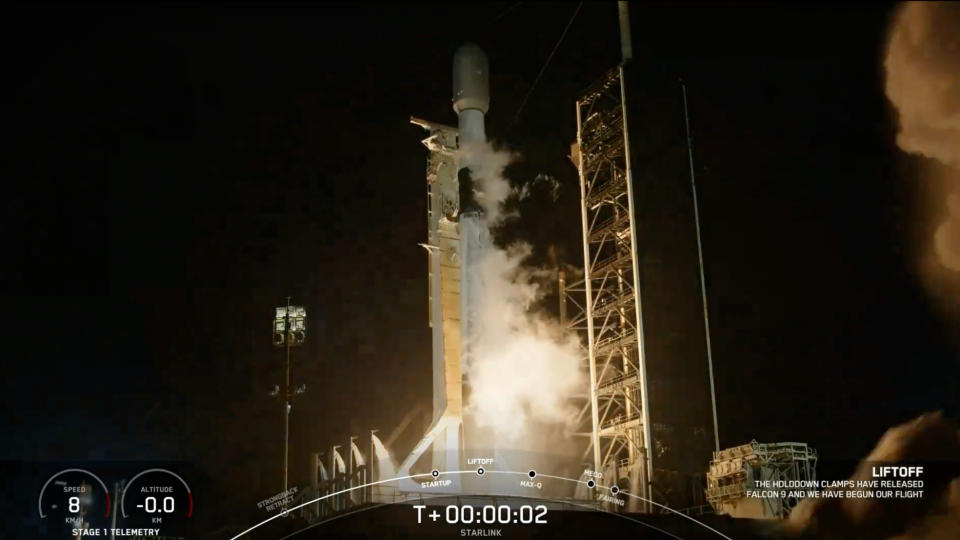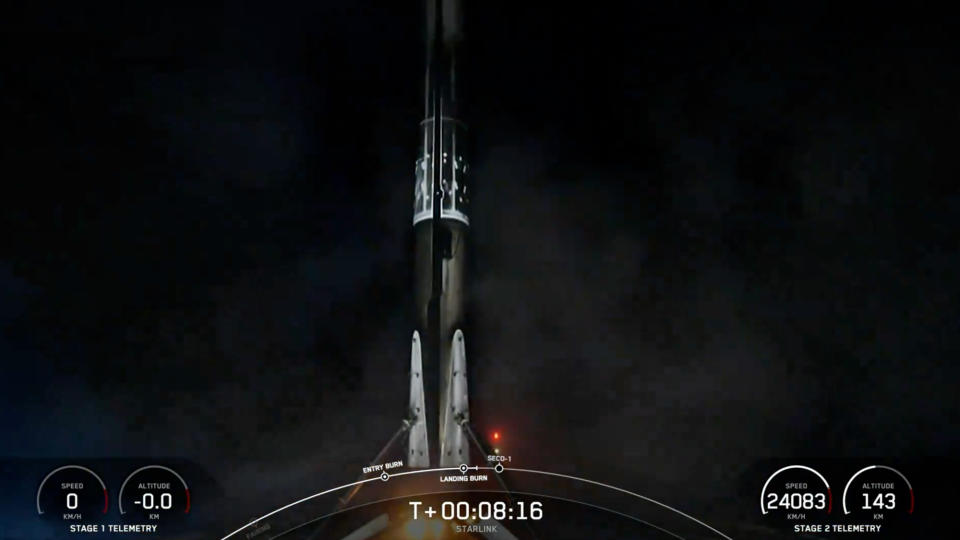When you buy through links on our articles, Future and its syndication partners may earn a commission.


SpaceX launched another batch of its Starlink satellites to orbit early Friday (Aug. 2), continuing the company’s bounceback from a July 11 failure.
A Falcon 9 rocket topped with 23 Starlink craft lifted off from NASA’s Kennedy Space Center in Florida on Friday at 1:01 a.m. EDT (0501 GMT).
The Falcon 9’s first stage returned to Earth about eight minutes after launch as planned, landing on the SpaceX droneship A Shortfall of Gravitas droneship, which was stationed in the Atlantic Ocean.


It was the 12th launch and landing for this particular booster, according to a SpaceX mission description. Nine of those 12 flights have been Starlink missions.
The Falcon 9’s upper stage, meanwhile, hauled the 23 Starlink satellites to low Earth orbit, deploying them there about 64 minutes after launch, according to SpaceX.
Related: Starlink satellite train: how to see and track it in the night sky
RELATED STORIES:
— SpaceX Falcon 9 rocket suffers failure during Starlink satellite launch (video)
— SpaceX bounces back from Falcon 9 failure with successful Starlink launch (video)
— Rare SpaceX rocket failure shows exactly why NASA wants 2 commercial options to fly astronauts to ISS
Friday’s launch was SpaceX’s fourth in less than a week, following a Starlink liftoff on July 27 and two more on July 28. Those three launches broke a two-week drought for the company, which was grounded for a spell after a July 11 Falcon 9 failure.
That mishap occurred after a Falcon 9 upper stage sprang a leak of liquid oxygen, preventing the vehicle from performing a planned orbit-raising burn. Twenty Starlink satellites were lost as a result.
SpaceX identified the cause of the leak as a crack in a line for a pressure sensor in the upper stage’s liquid-oxygen system, and says it has taken measures to prevent the problem from recurring.
Editor’s note: This story was updated at 2:30 a.m. ET on Aug. 2 with news of successful launch, rocket landing, and satellite deployment.
